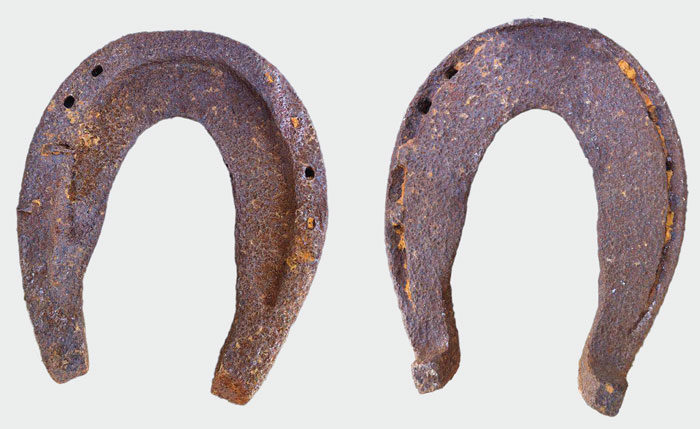ANSWER:
This cast-iron keyhole-type horseshoe from the 17th-18th century features thickened heels and heel calkins. It has a fullered groove set close to the outer edge through which the eight oval nail holes were punched. The keyhole shoes also have square-cut heels. The length of the shoe is 121 mm and the width is 110 mm.
Keyhole-shaped horseshoes date to the mid-16th century and up to the 18th century. When dating horseshoes, it’s worth noting that keyhole shoes from the mid-16th century are the first fullered shoes to exist, says Esco Buff, PhD, APF-I, CF.
“These horseshoes also have four nail holes on each branch, with the ones from the 1700s reaching 10 nail holes in total,” says the Clearwater, Fla., farrier. “By the end of the 18th century, keyhole shoes have 20 nail holes. These horseshoes also have a convex surface on the underside and a concave surface by the hooves.”
If you have a horseshoe or a farrier tool that you’d like to submit, please share it with us at jcota@lessitermedia.com.
SOURCE: Esco Buff, PhD, APF-I, CF








Post a comment
Report Abusive Comment